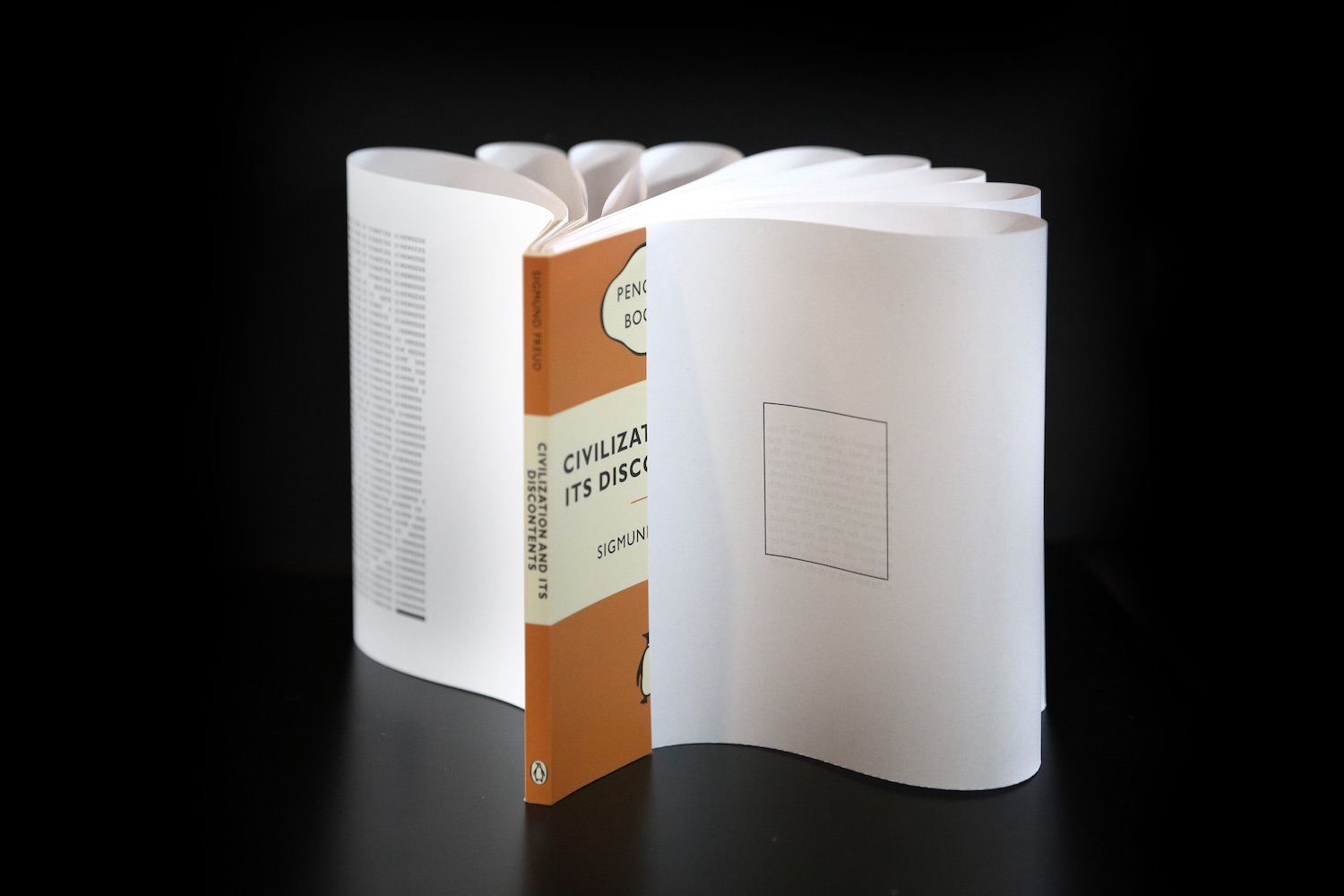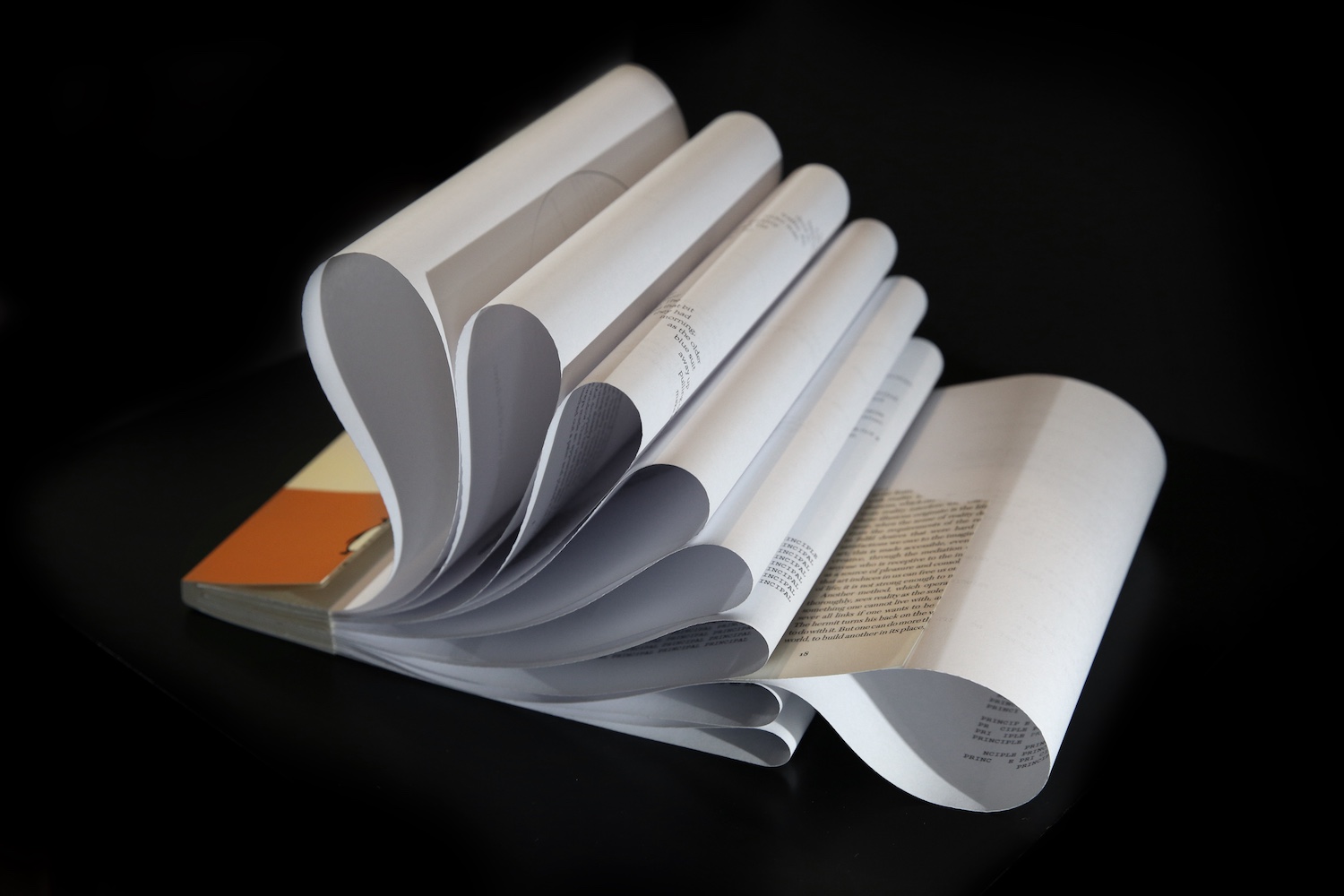The Persistence of Memory.
Or Civiliza its Disco
The concept of the book was centered around ideas of deconstruction. The film produced a non-linear narrative which disrupted conventional ideas of storytelling, leaving much of the meaning- building up to the viewer. I took this idea and attempted to subvert the classical idea of the novel in the same way.
This manifested in the creation of a physical object, the deconstruction of a book, beginning with taking a pre-existing text and literally cutting it in half. The book chosen was Sigmund Freud’s “Civilization and its Discontents” in a classic orange penguin format. The book already carries connotations of conceptualism and deconstructivist tenancies.
The text is then intersected with a new narrative, perhaps owing between or a seen in a more disruptive way, intervening. There are parallel narratives, between the books and across pages. There is a sense of tangentialism as well, as the new pages extend from and then loop back into the original book.
Like the film, the book has a multitude of ways of being read — or not, being an object of sculpture in itself. Each page of the new text can stand by itself, or be read on the exterior or somewhat obscured interior.
The new text itself is set in a non-traditional way, with design intervening to support or contrast with the storyline. The words follow a linear narrative, but their presentation on the page works to hinder its reading in a traditional fashion. Moments of disruption occur when the character fixates on a word, or a conversation is dissected into
two halves. The design choices major seek to represent the mental state of the main character, using simple type — sometimes spaced, sometimes overlapped, sometimes repeated and redacted — to convey the story.
Meaning is obscured and problematised, leaving the reader to construct, or perhaps re-construct, meaning for the words.
Graphic Design projects from the Image and Media subject as part of the University of Melbourne’s Bachelor of Design. The initial brief was to transform a book into a film and then to reverse engineer the process, creating a book from the film.
Book — InDesign and handmodeling
Film — Final Cut Pro and Adobe After Effects




